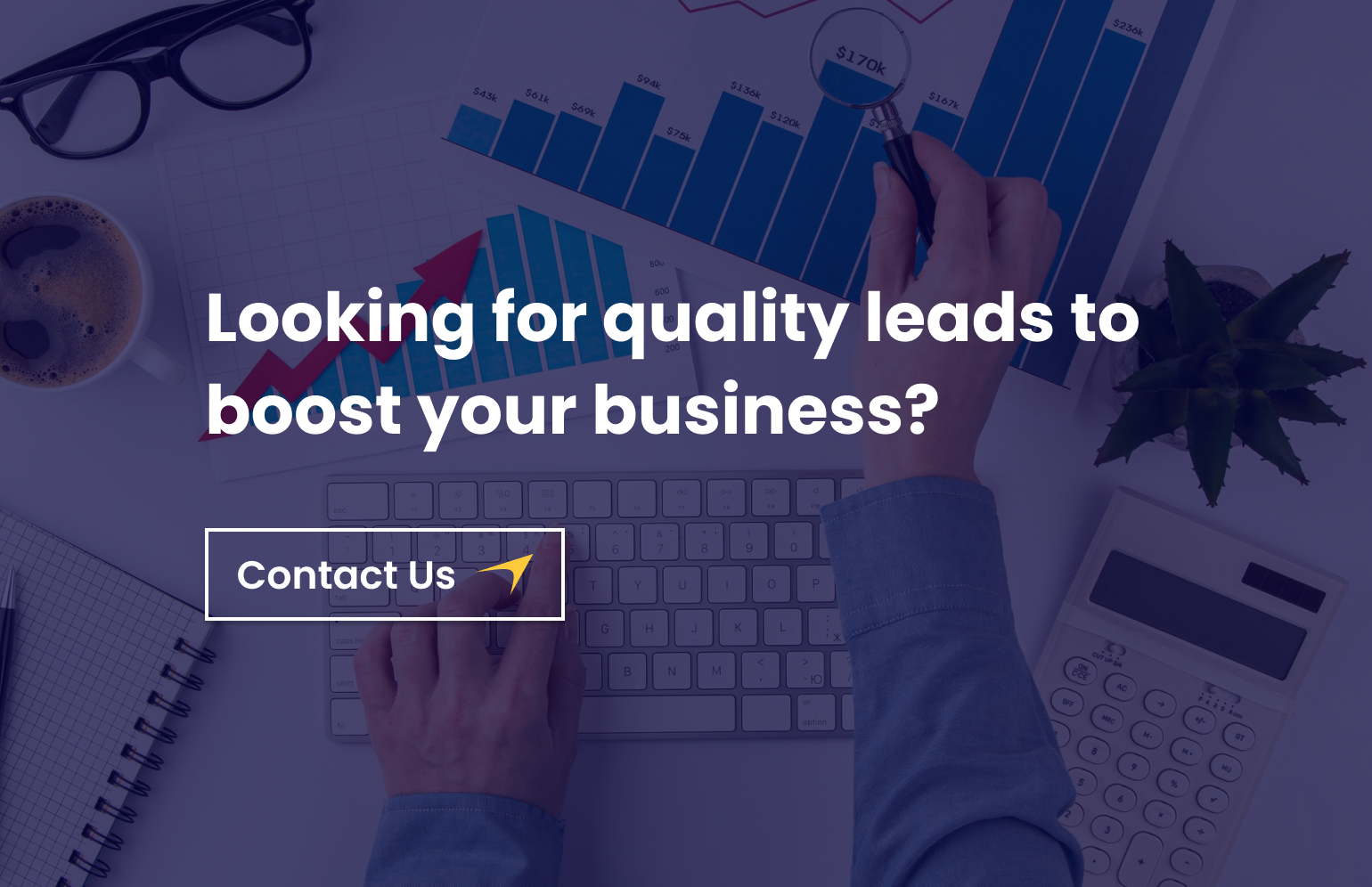Expert Tips for Building a Successful E-commerce Website
5 mins | 23 Oct 2023

Table of Contents
2. Find a Domain Name for Your eCommerce Website
3. Choose the Right Type of eCommerce Platform
4. Choose a suitable template according to your e-commerce project
5. Product Page Optimization and Site Structure
6. Setting Up Safe Payments for Your Online Store
7. User Experience and Mobile Optimization
8. Creating Trust with Your Customers
1. Introduction
Are you looking to get more traffic to your e-commerce site? Well, you're in the right place! We're here to help you understand something that can help you build a website for eCommerce with lots of traffic.
We'll break down some easy-to-follow Tips that can boost your eCommerce site. Whether you're starting to Build An eCommerce Website or developing an existing one, these ideas will help you to build a successful eCommerce project.
We'll start by explaining the basics of eCommerce site development and how to improve your website for visitors and search engines. No need to worry if you're using WordPress; we've got you covered there too.
Have you ever wondered how to start an e-commerce business in India for selling things online? We'll guide you through that process. And if you're considering starting an eCommerce business in India, we've got some tips for you, including understanding how prices work for eCommerce websites in India.
So, whether you're a seasoned pro or just getting started with an eCommerce site, let's dive into these simple yet effective e-commerce and SEO-related tips to get more traffic to your online store. Ready? Let's go!
2. Find a Domain Name for Your eCommerce Website
When you're starting to build an eCommerce website, picking the right domain name is like finding the perfect location for a physical store. It's super important. Here's the best e-commerce development companies for creating eCommerce websites. Let's explain why it's crucial and how to choose and register the best one using simple words.
Why Does a Good Domain Name Matter? Your domain name is like your store's. People will remember it when they want to visit your online shop. A professional and relevant domain name makes people trust your online store more. It's like a friendly face welcoming them in. If you put words related to your business in your domain name, like "website e-commerce" or "e-commerce website project," it can help your store appear when
people search online.
I. Choosing and Registering Your Domain Name:
- Keep It Relevant:
Make sure your domain name matches what your store is all about. It should tell people what you're selling.
- Keep It Simple:
Short and easy-to-spell names are best. Use simple symbols or dashes. Simple words are easy to remember.
- Use Keywords:
Include words from your list like "website ecommerce" in your domain name if you can. This can help your site show up on search engines.
- Check If It's Available:
Use websites that check if your chosen name is available.
- Pick a Registrar:
Choose a website like GoDaddy, Namecheap, or Google Domains to register your domain name.
- Complete the Registration:
Follow their instructions to give your contact info and pay for your domain. Here is the full registration process guide.
Choosing a domain name that fits your brand and includes essential keywords sets the stage for your eCommerce website's success. It's like having a sign on your digital store that draws in visitors and makes them feel welcome. This is the first step in building a great online shop, and it's essential to get it right.
3. Choose the Right Type of eCommerce Platform
Starting your e-commerce project is an exciting journey and one of the first big decisions for building an e-commerce Website. This choice significantly impacts how your e-commerce project will work and how successful it can be. Let's take a simple look at the different types of e-commerce platforms and understand why thinking about SEO (Search Engine Optimization) is essential when making an e-commerce website on WordPress.
Several hosting platforms are available for building an e-commerce Website per your requirements. But you must choose the right platform depending on how you want to develop an e-commerce website. Here, we share some pros and cons of different platforms.
I. Hosted Platforms:
Hosted platforms, such as Shopify and BigCommerce, are like ready-made stores. They handle essential things like hosting your website and making it secure. This is great because it's hassle-free and saves time. However, there's a trade-off. You might have less freedom to change how your store looks and works. Plus, some hosted platforms charge a monthly fee, which can add up over time.
II. Self-Hosted Platforms:
Self-hosted options, like WooCommerce for WordPress, give you total control. It's like building your store from scratch exactly how you want it. You can customize everything to fit your brand perfectly. It would be best to handle the technical stuff, like hosting your website and ensuring it's secure. This might need some technical skills.
III. SaaS (Software as a Service) Platforms:
SaaS platforms, such as Wix and Squarespace, are super user-friendly, especially if you're new to this. They provide tools to drag and drop things to create your store. It's like building with building blocks. But here's the thing: these platforms might keep you from making significant changes. If your store grows a lot, making it more prominent on these platforms could be tricky.
IV. Open-Source Platforms:
Open-source platforms, like Magento and PrestaShop, are like a blank canvas for your store. You can create anything you want on them because they're highly customizable. This is fantastic for big stores with specific needs. But there's a challenge. These platforms can be complex to learn, and you might need some technical skills to manage them properly.
Remember, your choice of eCommerce platform isn't just about building an e-commerce site; it's the foundation for your online business. So, when you're checking out the different types of platforms, remember to think about SEO. It's not just a preference; it's a smart move for the future success of your online store. So, let's pick the right platform and get your online business soaring!
4. Choose a suitable template according to your e-commerce project
Imagine your website e-commerce as a digital storefront, and your template is like the signboard and decoration of that store. Choosing the right website template is as vital as dressing right for a special event. It can profoundly impact how your online business is perceived and its success.
Your chosen template should fit your brand's style, values, and goals. Whether you run an eCommerce site, your template should mirror your brand's identity. Templates affect how visitors navigate your site. A user-friendly template makes it easy for customers to find what they need.
While templates provide a starting point, they should allow you to customize and make your site unique. Some templates are designed with search engines in mind, helping your site rank better on Google. Your chosen template should adapt as your business expands.
For customers' great impression of your business, you have to Build an eCommerce Website. So, when picking a template, it's not just about looks; it's a strategic choice that can significantly impact your online success. Take your time, explore the options, and select the template that perfectly aligns with your brand and goals.
Read more - 10 Easy Ways to create high-quality content
5. Product Page Optimization and Site Structure
Choose the right web development strategy according to your requirements. Hire a developer or make a custom web page. But we prefer custom web development for making your website. One way to do that is through Search Engine Optimization (SEO). Today, we'll break down two significant parts of SEO: Making your product pages awesome and having a website that's easy to navigate. When it comes to selecting your product pages, here are some simple tips to make them stand out:
I. Upload relevant images
Having great pictures of your products on your website is super important because they catch the eye of visitors. Here are some things to keep in mind when taking product photos:
High-quality images make your products look better and more valuable. They grab customers' attention and keep them interested in your website.
Make sure all your pictures are the same size. If they're different sizes, it can make your picture gallery look messy. You can use an image editor to make them all the same size.
Most of your images should be close-up pictures of your products from different angles. But remember to include some photos that show your product being used in real life. These are great for product pages and social media because they connect with people's emotions.
II. Catchy Titles and Descriptions of Product
Make your product titles and descriptions enjoyable, and sprinkle in some words people might use when searching. For example, if you're selling blue lady shoes, your title could be "Awesome blue lady shoes."
Arrange your site's content in a way that makes sense. This helps search engines understand how everything connects and makes exploring your area easier. Use links to help people find related stuff on your site. It's like signposts that guide them to more exciting things.
Making your product pages awesome and having a well-organized website is the key to SEO success. Using these simple tips, you'll help your site rank higher on search engines, get more visitors, and make your website a better place for everyone.
6. Setting Up Safe Payments for Your Online Store
When building a successful online store, making it easy for customers to pay securely is crucial. In this guide, we'll explore different payment options, stress why secure payments matter, and give you simple steps to set up these payment methods for your website.
Remember, on your website, there are so many kinds of customers visiting on one day around the world. It means many kinds of payment options you have to provide.
Payment Options you have to provide
I. Credit Cards:
These are the most common payment options. Think of PayPal, Stripe, or Authorize.Net.
II. Digital Wallets:
Make payments quick and secure with Apple Pay, Google Pay, or Express Checkout options.
III. Bank Transfers:
Some prefer paying through ACH or SEPA transfers directly from their bank accounts.
Steps to Set Up Payment Methods and always updated security:
IV. Choose a Payment Option:
Pick a payment method that suits your customers and business.
V. Create an Account:
Sign up with your chosen payment provider.
VI. Adjust Settings:
Log in and customize the settings based on your needs and preferred payment methods.
VII. Integrate with Your Website:
Use your eCommerce platform's plugins or extensions to add the payment method.
VIII. Test It Out:
Before going live, try a few test transactions to ensure everything works smoothly.
IX. Stay Secure:
Follow the security tips your payment provider provides, like using SSL certificates and data encryption.
X. Keep Improving:
Regularly check payment transactions and gather user feedback to improve the process.
By offering secure and easy payment options, you'll make your customers' shopping experience better and boost the trust in your online store. Secure payments are not just a must; they also make your online shop more competitive and trustworthy.
Read more - Web Development Strategies Every Developer Must Use
7. User Experience and Mobile Optimization
Regarding your online store, ensuring customers have a great experience and optimizing for mobile devices is super important. I'll explain how giving customers a good time on your site can help your store improve in search engines, and I'll share some easy tips for making your online store mobile-friendly.
I. Lower Bounce Rates:
If people visit your online store and like what they see, they will likely stay and shop. When fewer people quickly leave your site (what we call "bounce"), search engines notice and may rank your site higher.
II. More Conversions:
More people buy stuff when your online store is easy to use and checkout is a breeze. This is great for your sales and SEO because search engines like Google consider how often people purchase your site.
III. Quality Content:
A good user experience leads to people spending more time on your site. Search engines think your content is valuable and may rank it higher in search results.
IV. Mobile-Ready Design:
Your online store should work well on phones and tablets, not just computers. This is called a "responsive" design, and it's crucial for SEO because Google loves mobile-friendly sites.
V. Speedy Pages:
Make sure your site loads quickly on mobile devices. You can do this by using smaller images, reducing how much your site talks to the server, and storing information on people's devices when they visit your site.
VI. Structured Data:
Add unique code to your site (structured data) to make your products look better in mobile search results. This can help you get more clicks from mobile users.
VII. Ask Users for Feedback:
Get input from real people by asking them to test your mobile site. Find out what's hard to use and fix those things.
Giving your customers a great experience and making your online store work well on mobile devices is a smart move. It helps your SEO and keeps your customers happy and returning for more. So, focus on making things easy and enjoyable for your online shoppers!
Read more - Power of User Experience in SEO Ranking
8. Creating Trust with Your Customers
When you're building an eCommerce website, it's about more than just the technical stuff. It's also about making your customers feel happy and supported. Whether you're selling products like women's dresses or other items, the goal is to ensure a seamless and enjoyable shopping experience for your users.
Customer support is vital because it keeps your customers satisfied and loyal to your brand. Ask your customers for surveys, emails, and social media feedback to do this. Their opinions can help you understand what they like and want.
Plus, good reviews and testimonials from happy customers are like gold. They show that your products are great and can convince others to buy from your website. So, when making your eCommerce site, remember that taking care of your customers and listening to their feedback are the keys to making your online business a big success.
9. Conclusion
We always prefer to build an e-commerce website for a successful business, but implementing SEO helps us to gain more traffic. We have focused on implementing SEO factors when we build an e-commerce website. It helps to be a successful e-commerce website building with the correct technique.
Here, we cover all of how to make an e-commerce website and drive traffic to it because the main reason behind building an e-commerce website is to get more traffic and sell.
If you are considering making an e-commerce website, read this blog and implement the mentioned factors while building it.
Author









